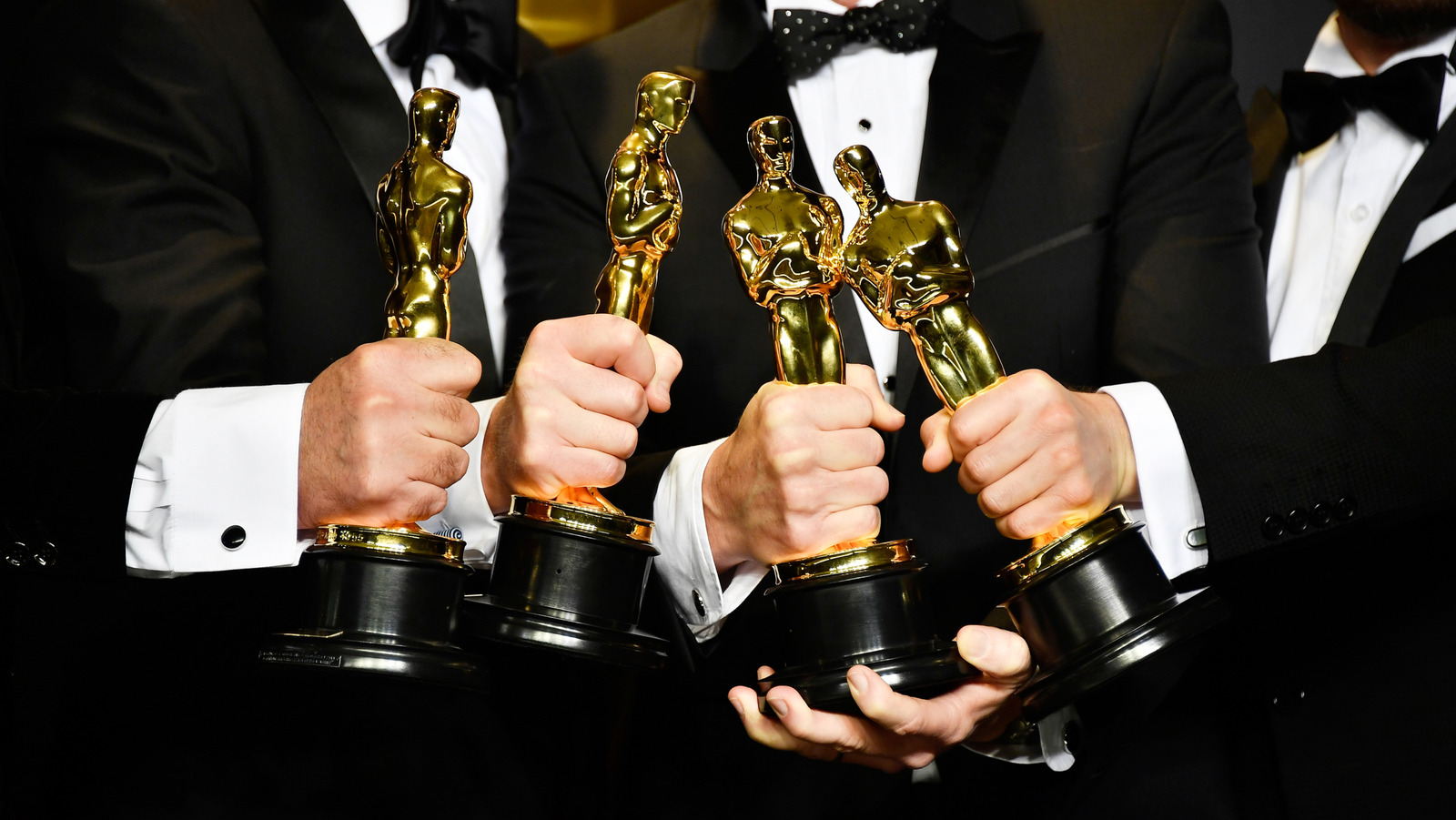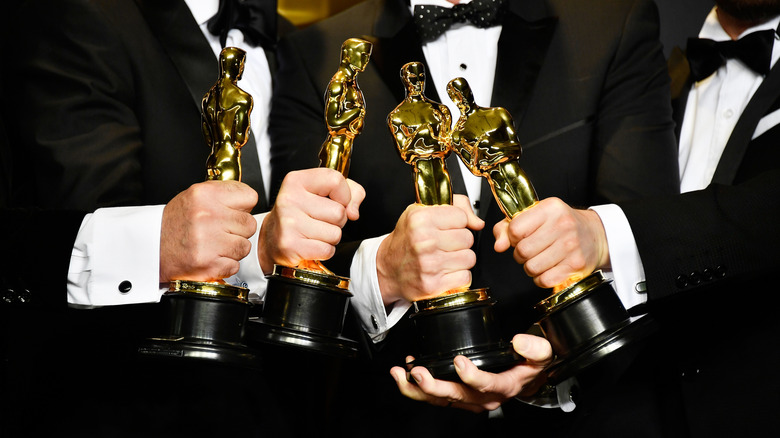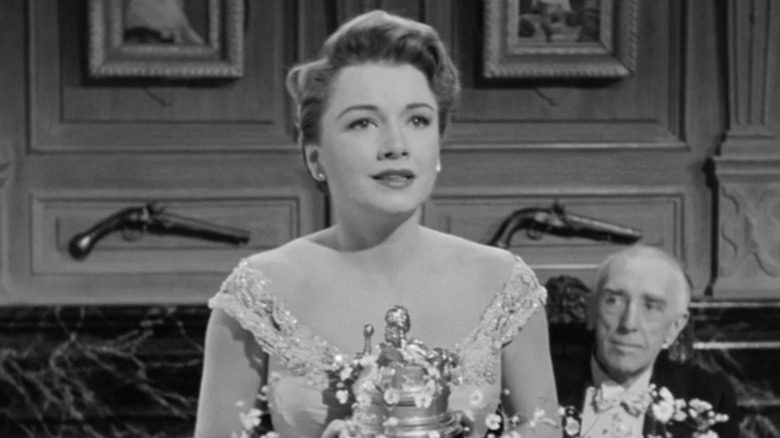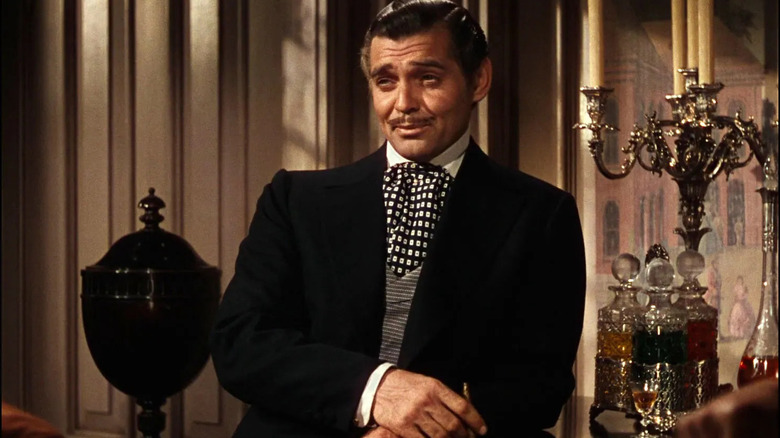Some interesting facts about the Oscar statuettes:
The award is 13 and a half inches long and the total weight of the award is approximately eight and a half pounds. The statues are made of solid bronze and plated with real gold. During a metal shortage during World War II, the Oscars were made of painted plaster, although winners were allowed to exchange them for bronze when materials became abundant again.
They say that giving away too many Oscars can tarnish the gold, so Oscar owners should be careful with them. It is made by figurines An art foundry called Polich Tallix in ChicagoRoy Lichtenstein and the same firm that handled the Korean War Memorial in Washington
The figurines aren't technically relevant either to voters or to the people who earned them. Indeed, beginning in 1951, the Academy of Motion Picture Arts and Sciences instituted a new rule prohibiting recipients from selling their Oscars for any price. It was important for the MPA to maintain its image and keep the Oscars prestigious. According to their own rulesOscar winners are not allowed to sell or dispose of their statuettes without offering to sell them back to the Academy for $1. This rule also applies to people who have inherited figurines from deceased relatives or received figurines as a personal gift.
Some Oscars have indeed ended up on the black market in the past, but for the most part you can only see Oscars in museums, studios, or the homes of talented people.
The Academy bans the sale of Oscar statuettes to protect its reputation
To quote the entire rule of the Academy, it reads:
“The Academy Award winners have no rights to the Academy's copyright or goodwill in the Oscar statuette or its trademark and service mark registrations. Award winners must comply with these rules and regulations. Award winners will not sell or otherwise dispose of the Oscar statuette, do not permit the sale or disposition of the same by law without first offering to sell it to the Academy $1.00 this provision also by gift or bequest applies to the heirs and assigns of Academy Award winners who may acquire the statuette.”
Of course, some Oscars have been marketed.
Marca website In 1999, he listed the fact that he bought Michael Jackson “Gone with the Wind” received an Oscar in the “Best Film” category. For this he paid 1.5 million dollars. Before the ban went into effect, 1944 actor Howard Russell, who won for The Best Years of Our Lives, sold his Oscar for $60,500 to pay for his wife's hospital bills. Also, screenwriter Herman J. Mankiewicz's Oscar for co-writing “Citizen Kane” went up for auction and sold for $588,455.
This was reported by CBS News In 2007, it was revealed that someone was trying to sell Mary Pickford's two Oscars in the 1920s. The Academy sued the seller and won back the statuettes. In 2014 With reference to Reuters news agencyThe nephew of Oscar-winner Joseph Wright (for art direction on “Stay In My Life” in 1943) actually auctioned off his uncle's Oscar for $79,200. When the Academy found out about the sale, they sued the seller and the auction house. They won that job too, and the Oscar should be returned to them. Woe to the buyer, whoever he is.
Other examples of Oscars are for sale
The famous director Steven Spielberg, who wanted to cope with the Academy, once tracked down the Oscars won by Clark Gable for Gone with the Wind. Bette Davis won two Oscars for “Dangerous” and “Jezebel”. He bought the Gable for $607,500 and the Davis pair for $758,000 at the auction. Spielberg was not a collector and donated the Oscars back to the Academy. I don't think he accepted $1 back for them. It was in 2002 and The Los Angeles Times reported on this.
In 2012, Yahoo! informed said that he sold the Oscar owned by the wealthy magician David Copperfield for 2 million dollars. Director Michael Curtiz won an Oscar for his work on Casablanca, and Copperfield reportedly bought it in 2003 for $231,500.
Given that the rule that the Oscars could not be sold did not go into effect until 1951, most stories about black market statuettes involve awards won in the 1920s, 30s or 40s. If you've seen any newer Oscars in person, they've likely been donated or loaned to a museum for display.
Unfortunately, there is currently no official information on how many Oscar statuettes there are. This would require a lot of research and investigation, as well as a lot of leg work. However, if the Academy is looking for someone to undertake such work, there are likely qualified cinemas around the world who would be happy to contribute. Like the Academy itself, its fans likely want the institution to maintain its reputation.






